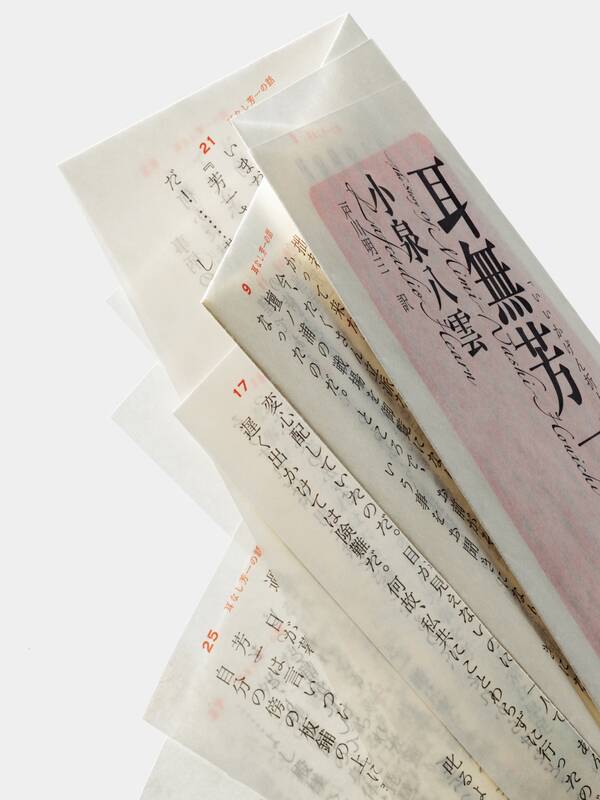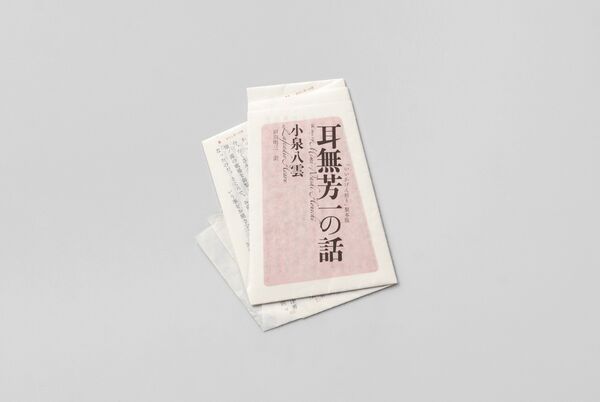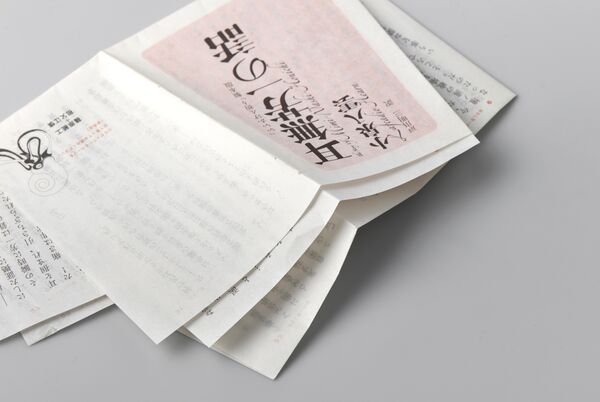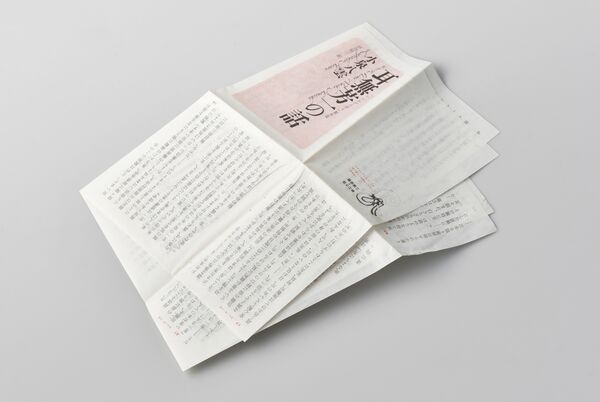
22
Honest Determination was Contagious: The Casual Fold Process
The work received by Shinohara Shiko has changed dramatically over the past 10 years or so. We do not judge book-making just by what is technically “doable or not”, but rather by what the client wants to express through the binding. Asking and thinking about this fundamental question has come to set the direction for our book-making. In retrospect, we might say that the “Casual Fold” folding process was the origin of Shinohara Shiko’s current style.
The Casual Fold began as part of “Makoto Sobue’s Experiments”, a popular series of articles in the magazine “Design no Hikidashi”. Shinohara Shinko was participating in an experimental project using a bookbinding and folding machine, and several representatives had a meeting with Tsuda-san, the chief editor, in the office of Sobue-san, the book designer. After Shinohara finished explaining in detail the mechanism and precision of the folding machine, Sobue-san crumpled up a piece of paper in front of him and threw it on the desk, saying, “I wish you could fold something like this with a machine.” “What is he talking about…? I just finished explaining how the folding machine can make beautiful folds, both horizontally and vertically!” Although Shinohara was taken aback by Sobue-san’s strange request, he wanted to avoid making a lame reply on the order of, “Well, we can’t do it.” He put his mind on overdrive and desperately thought about an answer to the problem.
Later, after Shinohara had calmed down, he realized that perhaps what Sobue-san had wanted was not to reproduce the piece of paper’s crumpled state as it was, but rather to express the crumpling of paper by hand using a folding machine. He then began to ask himself the question from a different point of view: how then could this feeling of crumpling be expressed through a folding machine? Maybe, by removing some parts from the folding machine and repeating the diagonal fold over and over again, it might be possible to create a sense of misalignment and crumpling?
When he brought up the idea of removing parts from the folding machine to the person in charge of it in the company, he simply replied, “Can’t be done.” That employee was Toshiyuki Furudate, the most technically capable person at Shinohara Shinko. He was a senior employee from the previous generation, and had been at the company longer than Shinohara himself. Shinohara was so convinced that with his skills, it would be possible to make it work, that he desperately insisted, saying, “I don’t care if you break the folding machine in this experiment.” Hearing this, Furudate nodded. “Okay,” he said, and proceeded to try it out. A few days later, he proudly brought the results to Shinohara, who saw that the folding process had worked perfectly, with the paper looking ideally disjointed and folded nicely at an angle. Sobue-san was immediately informed of what had happened, and he was both very moved and pleased. By the way, the name of this folding process, the “Iikagen-ori” or “Casual Fold”, was given to us by Sobue-san at this time.



担当 : 篠原慶丞
この案件は今の仕事のスタイルの原点となりました。最初に「くしゃくしゃを表現すれば良い」という発想に出会い、物事を単純化することが大切だと気づかされました。次に、機械を壊してでも古館に全幅の信頼を寄せたことで、感動が生まれました。「できる方法を探す」というポジティブなアプローチが問題解決を導いたと思っています。